Create a tightly edited, sequenced series of images with attention to use of text. This will form the basis for your Project 7 assignment and tutorial. You may have continued to shoot and/or make images; you may have changed direction since your last feedback report. However your project has developed, make the development clear in the image selection.
Pay particular attention to how you will use words alongside your images (captions, titles or additional ‘relay’ type text) and re-frame your images accordingly.
I have spent quite some time trying to refine my creative work so as to create a cohesive sense of flow and narrative. While I am happy with the beginning of my project and how I shift from more literal pieces to more conceptual works, I have been finding it very difficult to find a satisfactory way to close my project. I still don’t have an answer to how this project should end and have started to wonder if the sense of closure I am looking for will remain elusive. The feeling of my work being incomplete reminds me of my own experience of grief and attitudes towards loss revealed in my research. Jane Littlewood writes about the death of children, “Parents tend to remember their dead child at certain times during their lives because of the developmental milestones the child would have passed if s/he had survived. In this sense parents of either sex rarely, if ever, fully come to terms with the death of their child.” (Littlewood, 1993, p. 147)
When I last compiled this sequence, I added some new pieces to my selection. I am still creating works and coming up with new ideas, both individually and as collaborative works. My tutor provided me with a framework and reasons for what I should seek to achieve through a careful selection of works and the sequencing of that work. She said that the purpose of producing a coherent order for my major project is to identify repetition, connections and flow of my work and importantly, to see if there are any gaps. To aid me in my search for my ‘perfect’ sequence, I have printed my works so I can take them from my computer screen and place them around the house and see what they look like in analogue form. In addition to the order of my work and what to include, I have been looking at printed materials to accompany my exhibition. The exhibition might just last a few weeks and then be packed up and vanish. I wanted some printed brochures whether a booklet or zine to outlast my exhibition and provide proof that once upon a time, I held an exhibition.
Title
Working titles “Epitaph” or maybe “Memento Mori” or an off-the-wall choice might be “The Present is Also Valid as a Thankyou” (this is a translation from a poster I found in Italy to celebrate the life of the dead).
Introductory text
The photograph is a medium frequently used by those who are exposed to loss yet where the motives and understanding of why photography is used at such times is less than clear. In [title] artist Richard Dalgleish depicts the liminal threshold at the boundary between life and death, exploring how we experience loss and grief and how our memory functions during these most traumatic times.
Creative works in sequence
I show my chose works below. To these I have added a simple title. Am never sure beyond such simple labelling what to call my works. I also add in some text to go with each creative piece.
Initial work to introduce my project

“Hospital Time Runs Very Slowly”
© Richard Dalgleish, 2024, Liminality 01
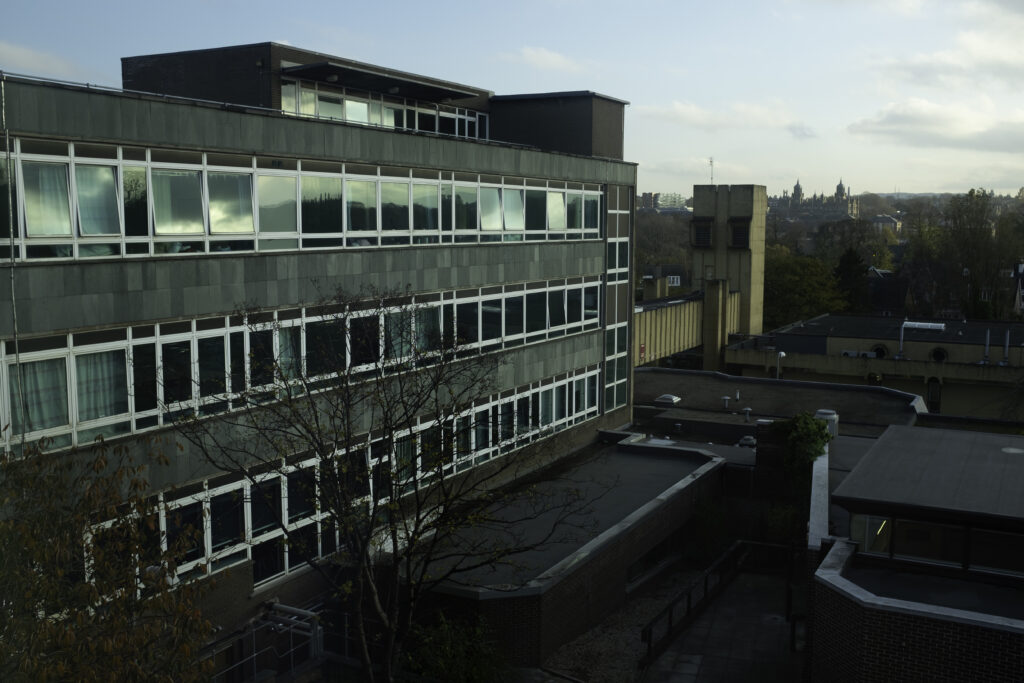
“View from my daughter’s hospital room”
© Richard Dalgleish, 2024, Liminality 02
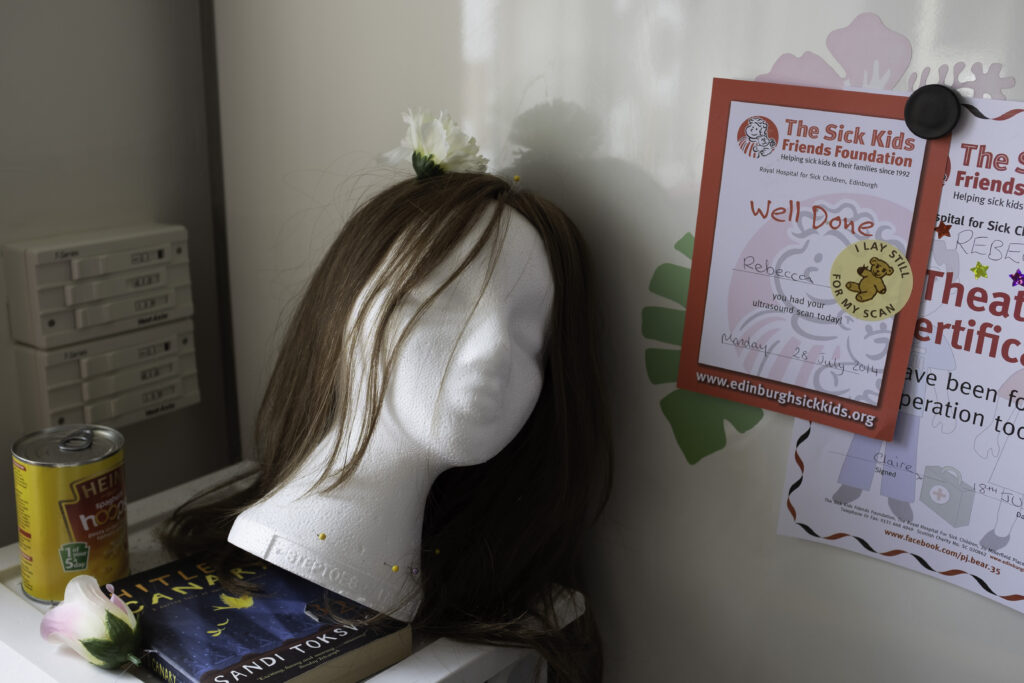
“Bed Bound”
© Richard Dalgleish, 2024, Liminality 03
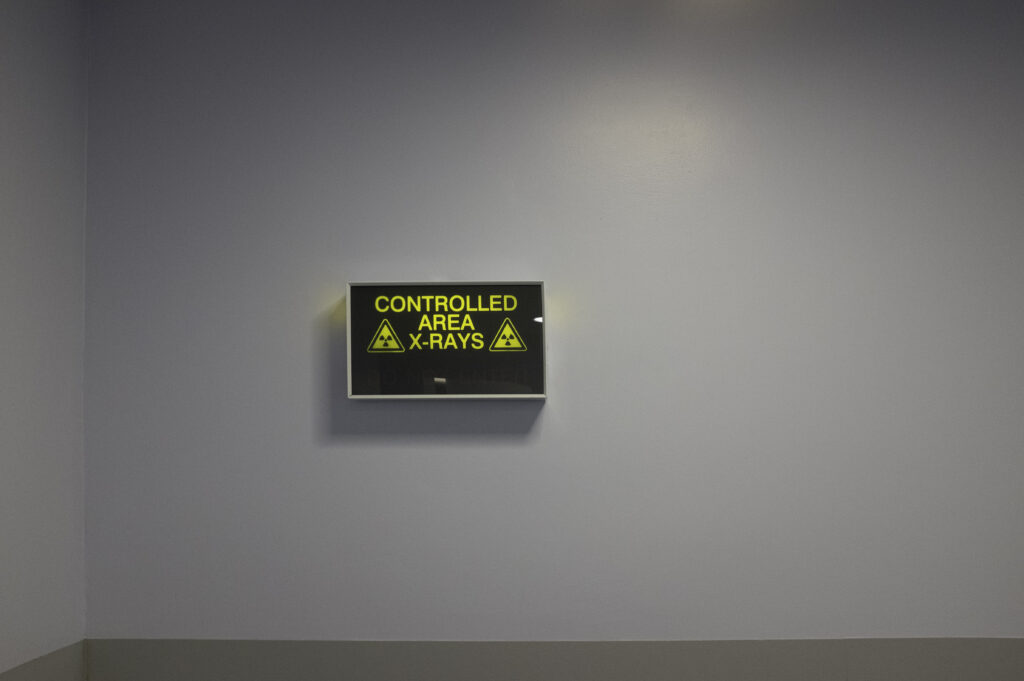
“Radiotherapy”
© Richard Dalgleish, 2024, Liminality 04

“Hope”
© Richard Dalgleish, 2024, Liminality 05
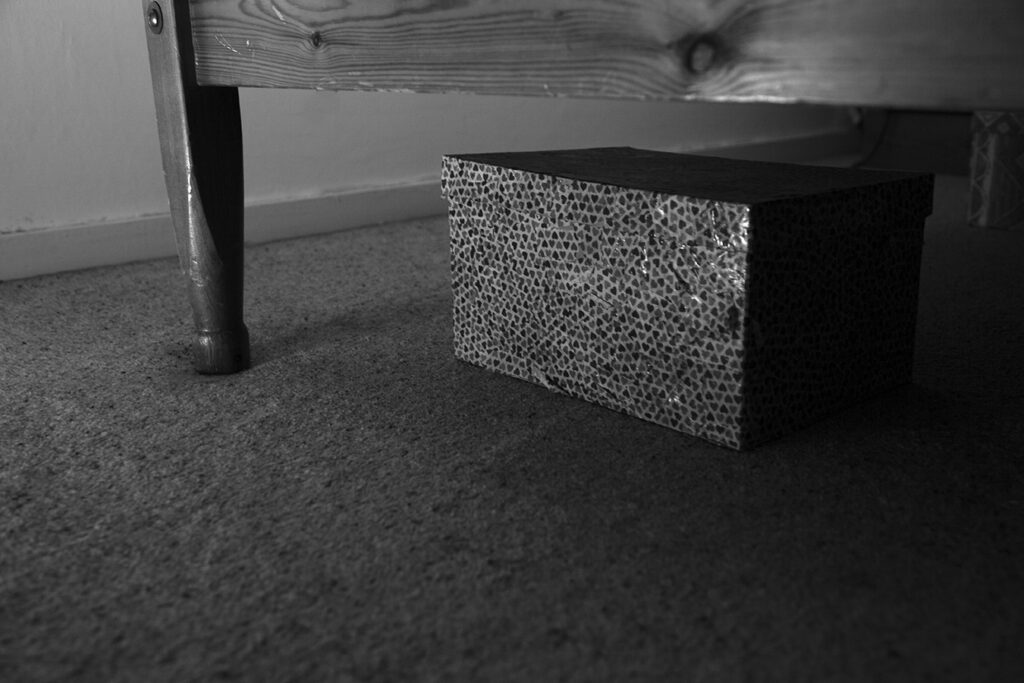
“Never Take the Lid Off the Memory Box”
© Richard Dalgleish, 2024, Liminality 06
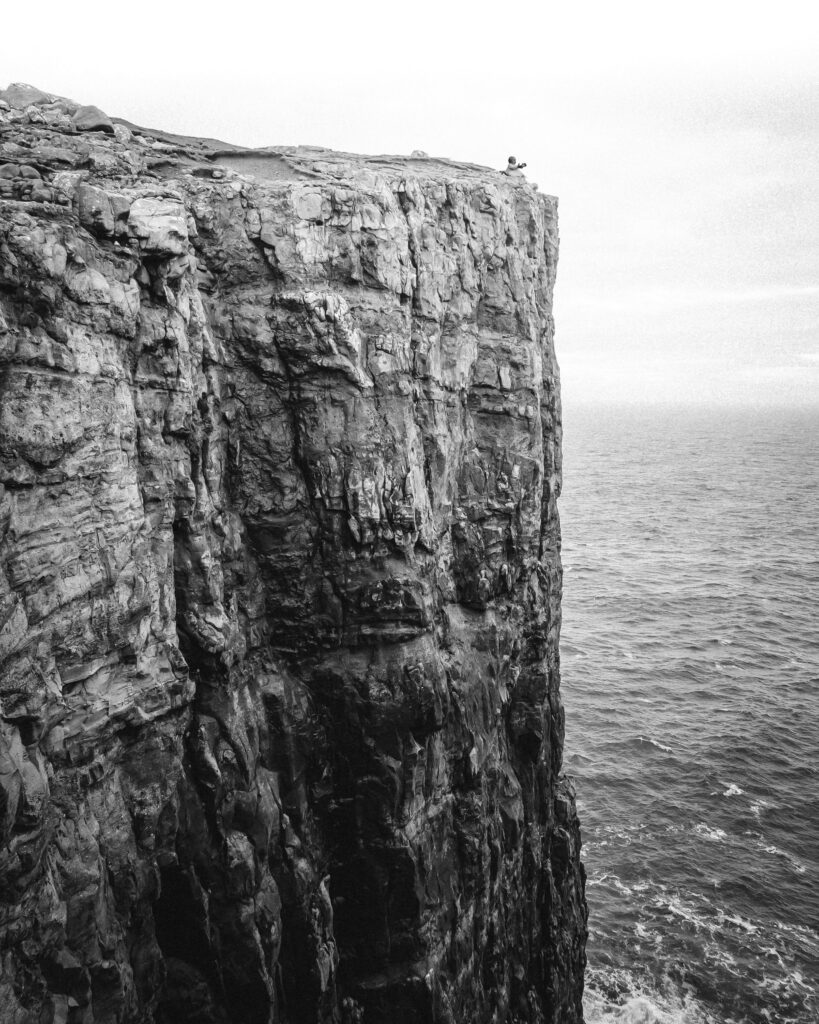
“The Abyss”
© Richard Dalgleish, 2024, Liminality 07
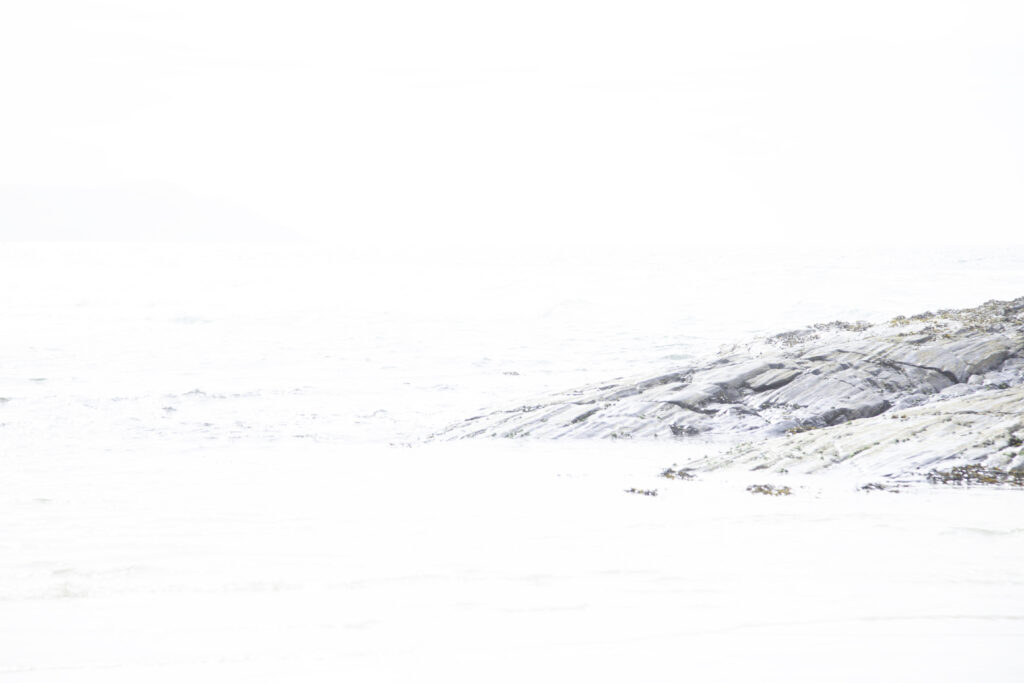
“The Banks of the River Styx”
© Richard Dalgleish, 2024, Liminality 08
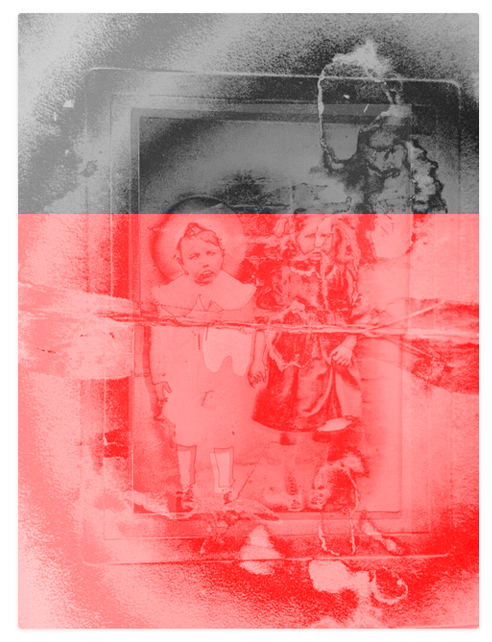
“Sudden Death”
© Richard Dalgleish, 2024, Liminality 09
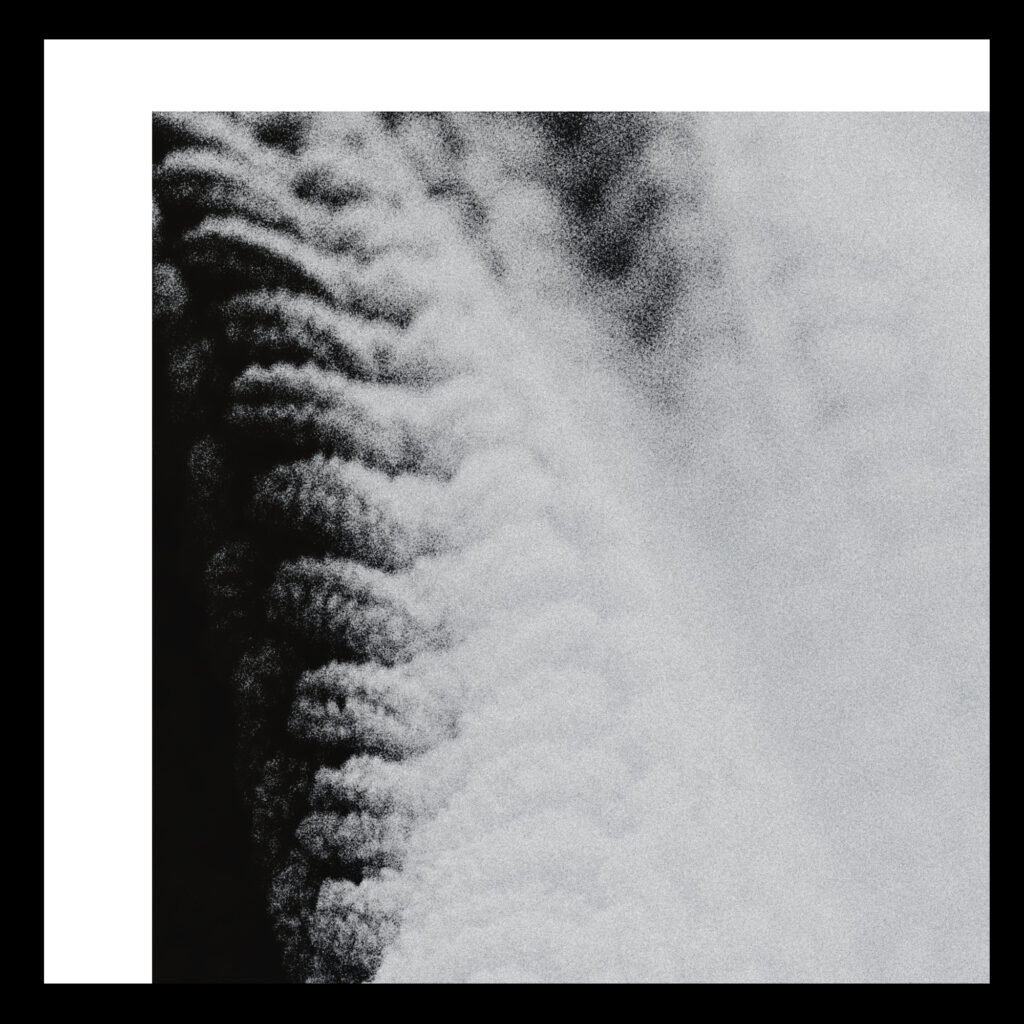
“A Gift for Baby”
© Richard Dalgleish, 2024, Liminality 10
At this point I feel pressured as I am unsure about the end of my project. I worry that I cannot provide a “Hollywood” style ending where everything “turns out right in the end”. To build such an ending would conflict with my own lack of closure. I have consciously introduced a sense of balance in my project by choosing six images based on the real, a further six which are more conptual in nature and finally two phyical objects. The images above stop at point ten, so I am missing my final two images from this selection. I will show some of my potential choices and some reasoning as to why I have doubts.
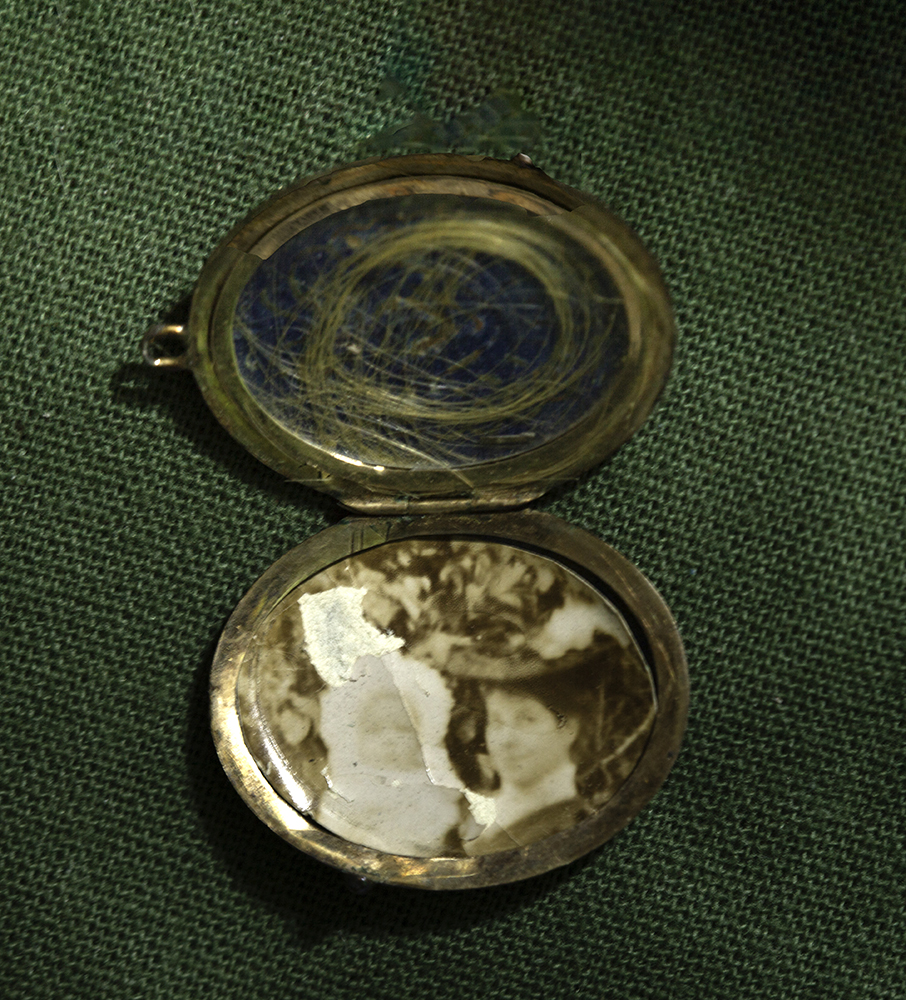
A photograph of a memorial locket with hair, a photograph of mother and baby. I originally had a sequence in my project where I used found photographs with this locket as a way to think about loss. I question whether this piece fits with other parts of my sequence and my sense of Rebecca. I discussed this with my peers and they were fairly united in their response that this piece should remain in my project as the locket has a clear link with the liminal space. Am undecided.
This is an old Christmas card with a baby. It is packed with meaning and lost memory and is an image I had thought of using with locket. I worry if both of these works relate more to the sense of lost memory than to the liminal sense I am reaching for.
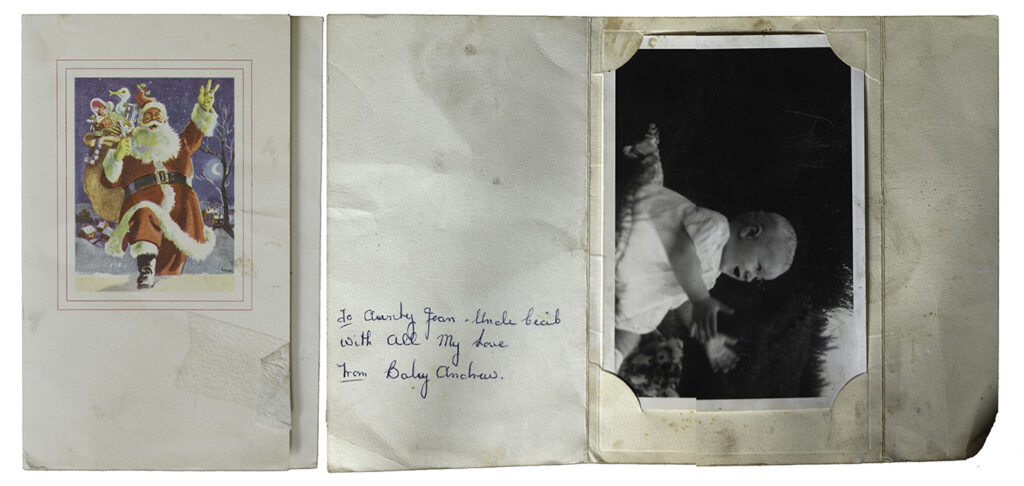
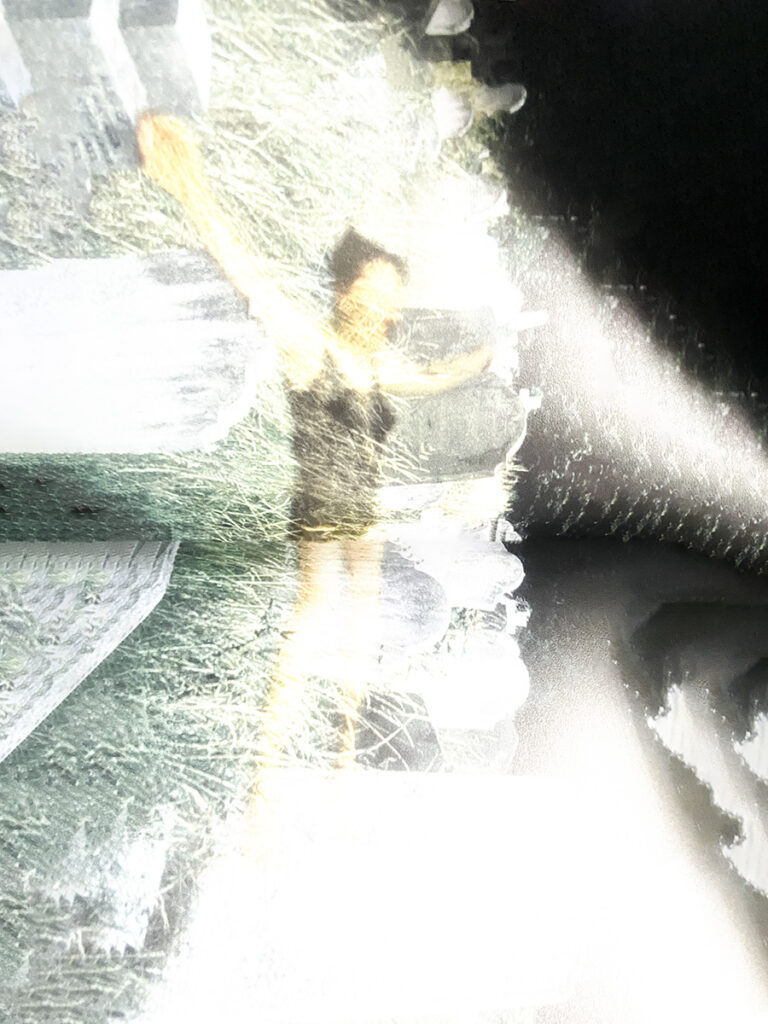
This image is from a small project I made in homage to Jo Spence. I used her photographs featuring Spence floating in water and applied my own edits to her works. I have not sought permission. I like this image and feel it relates to my sense of the liminal but I still worry over how it would fit with my narrative and whether I should introduce this image for my major project or keep it for a project in it’s own right. The seven works I produced for this Jo Spence Homage can be seen here https://richarddalgleish.net/liminal-test-pieces-as-a-homage-to-jo-spence/

I like this work and think this will be the next image I choose. It speaks of memory of those we have forgotten just like the person the memorial bench recalls. The textures of the grass, the leaves and the path give a stong sense of the liminal and of crossing to the other side. I am conscious that just because I like a piece is no reason, in of itself, to select it.
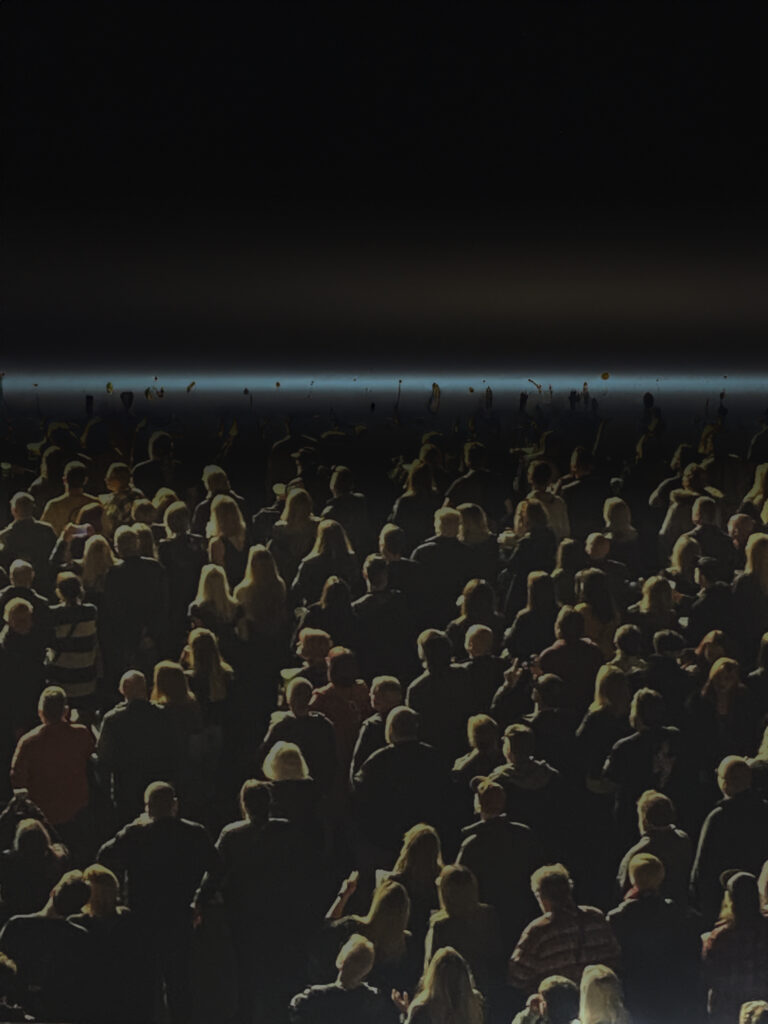
This is another potential choice. It shows a crowd of people all facing the same end and shows the iniversality of death. I worry about this piece and how it fits into my sequence.
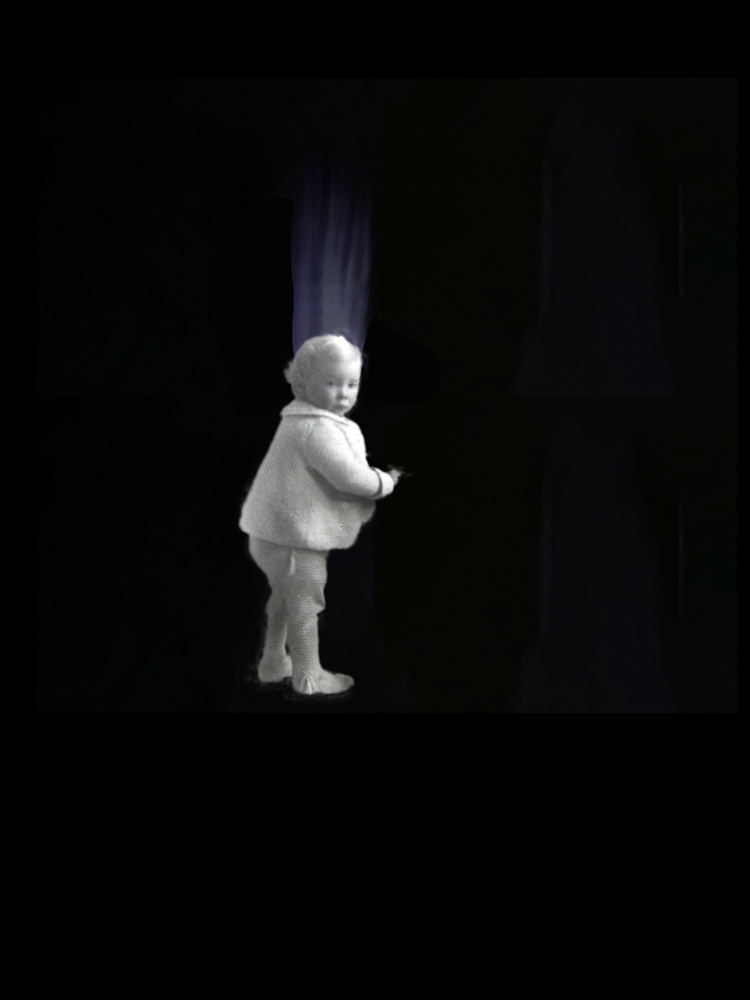
This final still image is a piece I have worked with for several years. I am unsure, perhaps because of my familiarity with this work, how it fits with my narrative. I found the child in old album photographs. The child stares back at us. I have placed the child on a black background and put some kind of light source coming from the child’s head. This idea is from the work “The Three Oncologists” by Ken Currie

This piece replicated the concept of the see-saw in a photograph with the transparency I have created balanced in the spine of a folder. I am unconvined if I need this work if I am able to deliver my concept of the actual see-saw.
I end my doubts over the final images in my project by showing a video clip I have been working on. For this work I visited the bridge where Rebecca’s ashes were scattered from.. I climbed down to the riiverside and collected some stones. I then used the stones as backdrop to sprinkle ash, experimenting with wood ash, black sand and crushed walnut shells as each fell in a different way and had a different feel. The falling of the ash on one levele is about the disposal of Rebecca’s body. On another level it speaks of emptiness and of my own anguish and my experience of grief. From my major project, I think this an interesting direction to go. Is it too literal though? It would complicate my exhibition as I would then have a video piece with need for projector, still images and the physical objects which I will speak about next.
The final element of my major project uses real objects. Firstly a see-saw and secondly, a blackboard. These objects have presented me with various challenges. I approached local council to ask what they did with any old see-saws in the parks they manage. They offered me a see-saw as long as I didn’t use it for child’s play. Just yesterday they contacted me to say the see-saw is ready for collection.
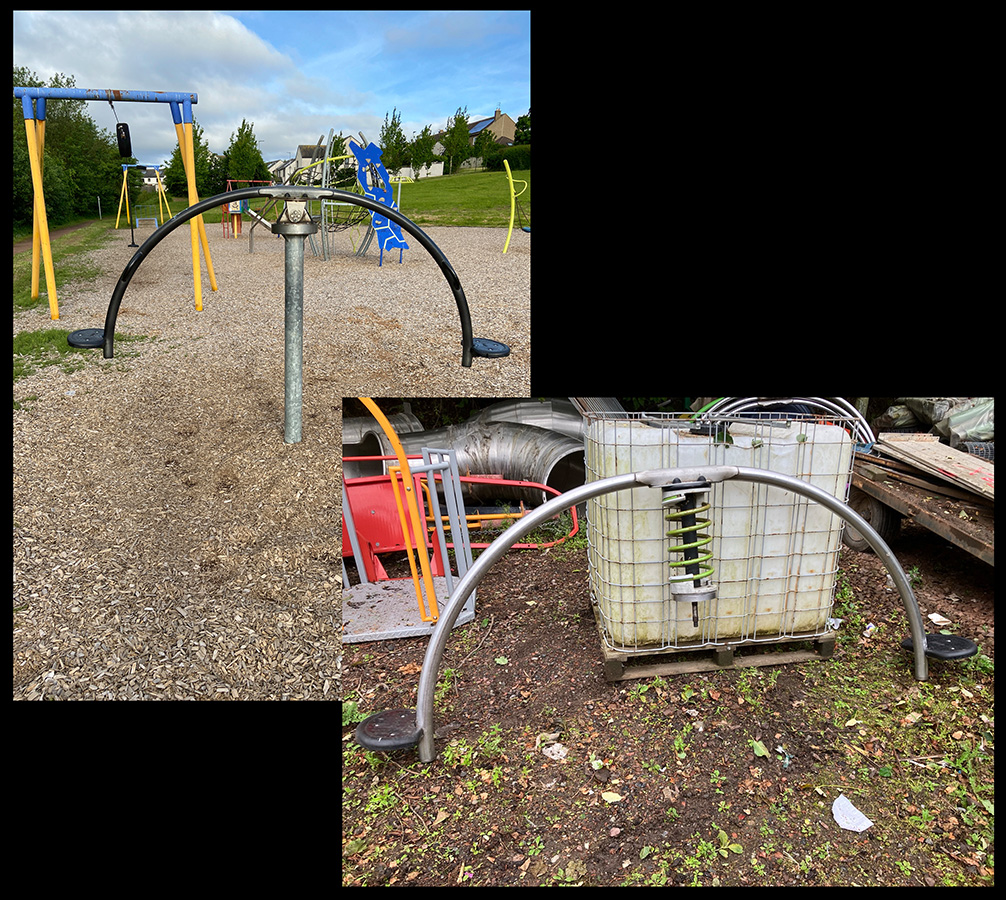
In image above, I show one of these ‘bounce’ see-saws in my local park. I also show the see-saw I have been offered free from local council. I show the main sping on which the see-saw bounces. As shown, this piece on offer is incomplete. I am left with choice of whether to accept or reject this. I don’t want to seem ungrateful but I don’t think it is suitable for my project. Even if I fix the balance, find a way to make that large spring safe and find something to replace the central column, taken out of the context of a playpark into a gallery, would everyone understand that this is a kind of see-saw and a child’s toy? I been in contact with another supplier in Nottingham to ask if they can supply a hinge and other parts to allow me to make my own see-saw.
Because the process of trying to source a see-saw from local council has taken many months and I wasn’t convinced anything would come out of it, I started to plan for an alternative. I thought of Roland Barthes and his memory of a school teacher who wrote the names of “students’ relatives who had fallen on the field of honor, Barthes notes both how he was the exception in being the only one who could claim a father and how at the moment when the blackboard was erased, nothing was left of this proclaimed mourning.” (Barthes, 2018, p. xi). At the start of my project, I had wondered about how to engage with audience in a way which would bring them to the heart of my work. I am influenced by conceptual and participatory works by Candy Chang and her 2011 piece “Before I Die” and by Motoi Yamamoto and his 2012 work, “Return to the Sea: Saltworks“. Chang paints her work on abandoned buildings stencilled with the question, “Before I die I want to…”. This helps the audience think about mortality. Yamamoto makes sculptures from salt as a memorial to his sister who died from brain cancer. On the final day of exhibition, he invites people to gather up the salt to carry it to the sea where it is deposited. I wanted in some way to replicate the involvement of my audience in my art. I remembered the words of Barthes and the solution appeared to me. A school blackboard where my audience are invited to write the names of those who have died or been lost or some thoughts about this person or how they feel. This brings thoughts of loved ones into current memory. The chalk will get on the hands and clothes of my audience as they write on the blackboard. This carrying of chalk particles with them is a sybol of carrying the memory of their loved ones with them as they go about their lives. At the end of my exhibition, I could wipe the blackboard clean yet even as I do so the chalk does not vanish so the memory isn’t completely lost. I have to source a blackboard for this idea.
References
Barthes, R. (2018) Album: Unpublished Correspondence and Texts. New York: Columbia University Press.
Chang, C. (2011) Candy Chang » Before I Die. Available at: https://candychang.com/work/before-i-die-in-nola/ (Accessed: 29 August 2024).
Littlewood, J. (1993) No Aspects of Grief: Bereavement in Adult Life. London: Routledge.
Yamamoto, M. (2012) Return to the Sea: Saltworks by Motoi Yamamoto – YouTube, Halsey Institute of Contemporary Art. Available at: https://www.youtube.com/watch?v=tzBS43QZZys (Accessed: 29 August 2024).